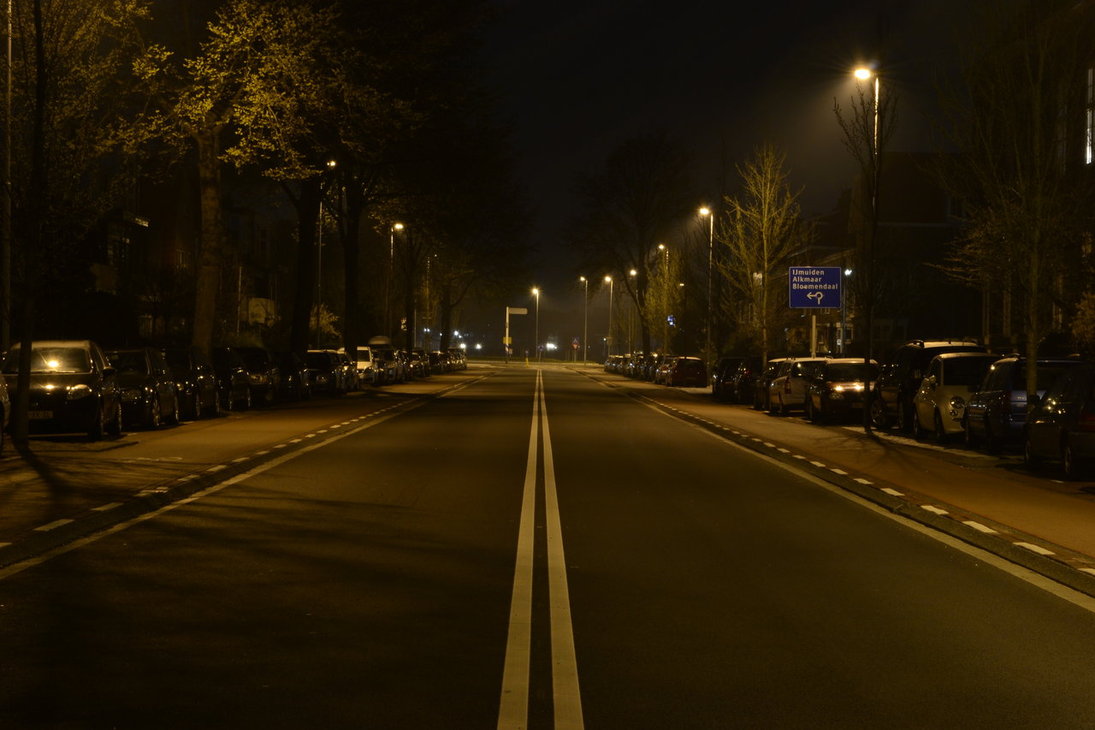Past Street—A Poem

by absorbing the emotions
of the hot blooded crowd on an empty night,
is adopting the persona
of the innocent bystander
as it guides the mob to its destruction.
But as the street continues
along the enclosure of the concrete,
it becomes evident
that the street is a friend.
Zach,
I like the picture, and the effort to write a poem about a picture. One of my favorite writing tools is to pick three random words and write a poem using all three in it. Two people can pick the same three words and come up with wildly different things.
This is an explication of your poem. My intent is to help you craft better poetry later. Revision is the training that makes first drafts better. Explication was my favorite/worst thing to endure at university. I hope you find it useful.
My favorite parts of this poem are the two main ideas at the beginning and the end. They seem contradictory, but perhaps through constant exposure the street comes to love what it devours. I like the line, "the street [...] is adopting the persona of the [...] bystander." I assume this is someone that travels on the street. Perhaps the street is animated by the people that walk it, absorbing not just their footfalls, but their essence, and bit by bit begins to become like the people.
The second standout part was the last line, "the street is a friend." We arrive here after the feeling that the street is absorbing maliciously something from the "crowd" or the people that walk, or drive on it. I'm curious about the contrast between the almost violent absorption and the friendly nature of the street. Absorb makes me think, 'unwilling,' or 'without choice;' that something is taken with or without consent.
But the street is friendly. Why?
And that is the crux of this poem: there is no story, no images to explain this dichotomy, no evidence (despite the speaker suggesting in the second to last line that it is indeed, "evident") that the street is either friendly, malicious, or even sentient at all.
The speaker talks about the street behaving like an innocent bystander while it guides a mob (what mob? the crowd? What crowd?) to destruction. Why? How? Did they crowd do something to the street? Does the street hate them, that is why it is disguised like something it is: inanimate object?
Maybe the crowd emptied out of a bar, or a funeral, or a bat-mitzvah. I immediately went back to the picture to see if there was a crowd and it is an empty street. I was confused.
Show the reader why the street is doing anything, and how it is actually, despite being a street, it is friendly.
I think you have something here, and an interesting idea worth refining and exploring. I look forward to seeing where it goes.
I like the way you're thinking. Just so you know, the poem is not based on the picture; I just pulled an appropriate picture from the Internet. I am not going to explain the exact meaning of the poem's message, that is for the reader to ponder.
I assumed it was about the picture as it was posted together.
"I am not going to explain the exact meaning of the poem's message, that is for the reader to ponder."
Providing evidence, context, and images to illustrate your point makes your poem better.
Avoid the abstract and obscure. It is confusing and forgettable.
Thanks! I hope to see the refinement.